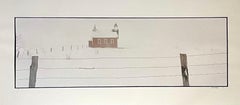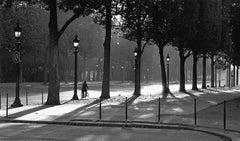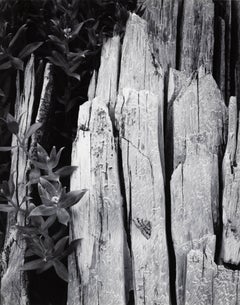Landscape Photography
1990s American Realist Landscape Photography
Color
1990s American Realist Landscape Photography
Color
1990s Contemporary Landscape Photography
Archival Paper, Black and White, Archival Pigment, Photographic Film, Pi...
1990s Contemporary Landscape Photography
Silver Gelatin
1990s American Realist Landscape Photography
Color
1940s Modern Landscape Photography
Silver Gelatin
1990s Romantic Landscape Photography
Silver Gelatin
1990s Modern Landscape Photography
Photographic Paper
1990s Contemporary Landscape Photography
Archival Paper, Photographic Paper, C Print, Color, Polaroid
1990s Contemporary Landscape Photography
Silver Gelatin
1990s Contemporary Landscape Photography
Metal
1990s Contemporary Landscape Photography
Archival Paper, Photographic Paper, C Print, Color, Polaroid
1990s Contemporary Landscape Photography
Archival Paper, Photographic Paper, C Print, Color, Polaroid
1990s Contemporary Landscape Photography
Archival Paper, Photographic Paper, C Print, Color, Polaroid
1990s Contemporary Landscape Photography
Photographic Film, Archival Paper, Photographic Paper, C Print, Color
1940s Modern Landscape Photography
Silver Gelatin
1990s Contemporary Landscape Photography
Photographic Film, Archival Paper, Photographic Paper, Color, Giclée, Pi...
1990s Contemporary Landscape Photography
Photographic Film, Archival Paper, Photographic Paper, Color, Giclée, Pi...
1990s Contemporary Landscape Photography
Archival Paper, Photographic Paper, C Print, Color, Polaroid
1990s Contemporary Landscape Photography
Photographic Film, Archival Paper, Black and White, Giclée, Pigment, Arc...
1990s Contemporary Landscape Photography
Silver Gelatin
1990s Contemporary Landscape Photography
Inkjet
1990s American Modern Landscape Photography
C Print
1990s Contemporary Landscape Photography
Photographic Film, Archival Paper, Black and White, Giclée, Pigment, Arc...
1940s Landscape Photography
Silver Gelatin
1990s Contemporary Landscape Photography
Archival Paper, Photographic Paper, C Print, Color, Polaroid
1990s Contemporary Landscape Photography
Archival Paper, Black and White, Giclée, Pigment, Archival Pigment, Phot...
1940s Modern Landscape Photography
Silver Gelatin
1990s Contemporary Landscape Photography
Photographic Film, Archival Paper, Black and White, Giclée, Pigment, Arc...
1990s Contemporary Landscape Photography
Archival Paper, Black and White, Archival Pigment, Photographic Film, Pi...
1940s Modern Landscape Photography
Silver Gelatin
1990s Modern Landscape Photography
Lambda
1990s Contemporary Landscape Photography
Archival Paper, Archival Pigment, Black and White, Photographic Film, Pi...
1940s Landscape Photography
Silver Gelatin
1990s Contemporary Landscape Photography
Archival Paper, Black and White, Archival Pigment, Photographic Film, Pi...
1990s Contemporary Landscape Photography
Archival Paper, Color, Archival Pigment, Photographic Film, Pigment, Gic...
1990s Contemporary Landscape Photography
Photographic Film, Archival Paper, Photographic Paper, Color, Giclée, Pi...
1990s Contemporary Landscape Photography
Photographic Film, Archival Paper, Black and White, Giclée, Pigment, Arc...
1990s Contemporary Landscape Photography
Archival Pigment
1990s Contemporary Landscape Photography
Archival Paper, Black and White, Archival Pigment, Photographic Film, Pi...
1990s Contemporary Landscape Photography
Archival Paper, Archival Pigment, Black and White, Photographic Film, Pi...
1990s Contemporary Landscape Photography
Archival Paper, Archival Pigment, Color, Photographic Film, Pigment, Gic...
1990s Post-Modern Landscape Photography
Silver Gelatin
1940s Modern Landscape Photography
Silver Gelatin
1990s Contemporary Landscape Photography
C Print
1990s American Modern Landscape Photography
C Print
1990s Realist Landscape Photography
Silver Gelatin, Photographic Paper
1990s Modern Landscape Photography
Photographic Paper
1940s Modern Landscape Photography
Black and White, Silver Gelatin
1940s Modern Landscape Photography
Black and White, Silver Gelatin
1990s Contemporary Landscape Photography
Archival Paper, Photographic Paper, C Print, Color, Polaroid
1990s Modern Landscape Photography
C Print
1990s Modern Landscape Photography
C Print
1990s Contemporary Landscape Photography
Archival Paper, Photographic Paper, C Print, Color, Polaroid
1990s Contemporary Landscape Photography
Archival Paper, Photographic Paper, C Print, Color, Polaroid
1990s Contemporary Landscape Photography
Archival Paper, Photographic Paper, C Print, Color, Polaroid
1940s Modern Landscape Photography
Photographic Paper
1940s Modern Landscape Photography
Silver Gelatin
Landscape Photography for Your Home or Office
Since the introduction of photography in the 19th century, it has been used to show the earth’s diverse landscapes. Modern and contemporary landscape photography continues to capture scenes of landscapes from around the world while becoming much more exploratory.
Historically, artists have played a key role in landscape preservation. Early 20th-century landscape photography provided a powerful argument for the establishment of the U.S. National Park Service a century ago, and iconic national park shots by Ansel Adams and Eliot Porter captured the public’s imagination and fueled conservation efforts.
The world of landscape photography has grown far more experimental in the last several decades, bolstered by innovative techniques and creative talents. Abstract landscape photography is often a thought-provoking exploration of bold, bleeding colors. To understand just how abstract these images can be, look no further than Jean-François Rauzier's outstanding landscape compositions.
A simpler style is offered by minimalist landscape photography and its subdued tones. These pieces tend to imbue their surroundings with a sense of serenity, making them an excellent addition to bedrooms and quiet living rooms. And like any other works of art that you’ve brought into your home, there are many ways to arrange photography in a space. Small areas, for example, are ideal for displaying more petite pieces. These can also be positioned in a cluster as a gallery wall. You can stand framed landscape photography on an easel, a mantelpiece, floating shelves or on the floor leaning against a wall.
Browse exquisite landscape photography on 1stDibs today and find an eye-catching image to complement any home or collection.
Read More
This Photo of the Salton Sea Captures a Serene Moment Amid an Environmental Disaster
Addison Jones shares how she got this gorgeous minimalist shot while immersed in the stink of dead fish.
This Photo of Big Sur Reveals the Awesomeness and Intimacy of Nature
When a beachcomber accidentally stepped in front of Jeffrey Conley’s camera, a perfect moment was captured.
Savor Ansel Adams’s Landscapes and Those of His Ambitious Successors
A new exhibition examines images by the master photographer alongside works by photographers who influenced him and contemporary creators.
These Artists Are Changing the Nature of Landscape Photography
Developing images using contaminated water or printing them on expired photo paper are just a couple of ways today's talents are putting their own spin on tradition.





